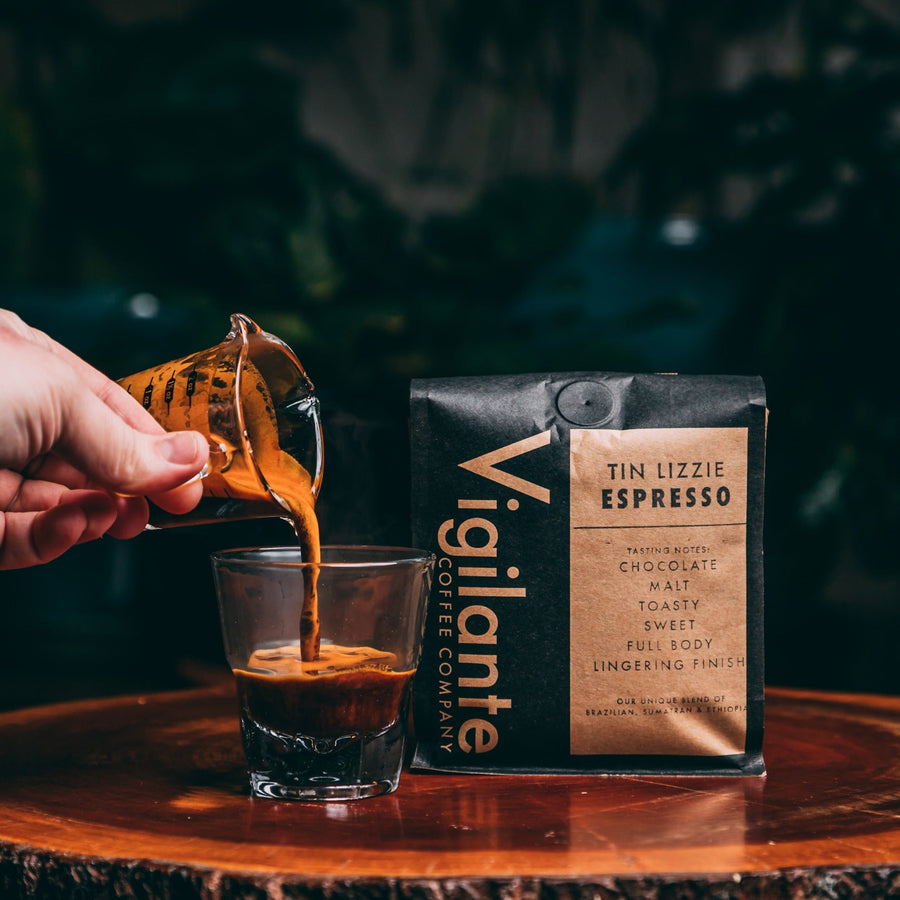Coffee Beans Uncovered: Uncovering the Tricks of Coffee and Blended Coffee Beans
When you assume concerning coffee, what enters your mind? Is it the rich fragrance of coffee or the intricacy of a well-crafted mix? Recognizing the subtleties of coffee beans can transform your experience. Each variety, from Arabica to Robusta, holds its very own tricks. As you explore even more, you'll uncover exactly how these beans shape flavors and effect sustainability. What might you find about your next mug?
The Beginnings of Coffee: A Historical Viewpoint
Although coffee is currently a staple in coffee culture worldwide, its origins map back to the early 20th century in Italy. You may be amazed to find out that the invention of coffee was driven by a desire for speed and performance. In 1901, Luigi Bezzera patented the initial coffee maker, intending to brew coffee faster than typical methods. This innovation swiftly captured the interest of Italian coffee drinkers, causing the coffee bars we recognize with today.
Understanding Espresso Beans: Varieties and Features
When you assume regarding coffee, it's necessary to acknowledge the different bean selections and their one-of-a-kind tastes. Each type brings a distinctive personality to your cup, influenced by elements like roast degrees. Recognizing these aspects can boost your coffee experience substantially.
Coffee Bean Varieties
As you discover the world of coffee, you'll quickly discover that not all beans are produced equivalent; each variety brings its very own distinct flavors and qualities to your cup. The most prominent types include Arabica and Robusta. Arabica beans are known for their smooth, nuanced flavors and reduced caffeine content, making them a preferred amongst coffee connoisseurs. On the other hand, Robusta beans load a more powerful punch with higher high levels of caffeine and an extra bitter taste, commonly preferred in blends for their crema-enhancing high qualities. You could likewise encounter specialty beans like Liberica and Excelsa, which provide distinctive accounts and are less typical. Each variety offers something different, so exploring will certainly aid you locate your best espresso.
Flavor Accounts Clarified
Comprehending the taste profiles of different coffee beans can elevate your coffee experience. Each bean selection provides one-of-a-kind characteristics that influence mouthfeel, preference, and fragrance. As an example, Arabica beans commonly provide a sweeter, a lot more complicated flavor with tips of fruit and flower notes, while Robusta beans have a tendency to be bolder, with nutty and earthy undertones.
When you discover single-origin beans, you may find unique regional tastes-- Central American beans might be bright and citrusy, whereas Italian blends typically supply abundant, chocolatey notes.
Roast Degrees Impact
Roast degrees play an important function in forming the taste and fragrance of espresso beans, affecting your total coffee experience. Understanding these roast levels helps you select the coffee that suits your preference preferences. Trying out with various roasts can lead to delightful explorations, improving your recognition for espresso.
The Art of Blending: What Makes Blended Coffee Unique
What makes blended coffee so interesting? It's everything about the art of integrating beans from different beginnings, roast degrees, and taste profiles. You're not simply blending; you're creating an unified balance that highlights the strengths of each bean when you blend. You can explore different combinations to improve acidity, body, and sweet taste, resulting in a mixture that's richer and extra complex than a single-origin coffee.
Mixing additionally enables you to deal with diverse preference choices. You can craft a blend that's smooth and mellow or one that's vibrant and robust, relying on your audience. Plus, mixing can assist preserve uniformity, providing a reputable taste experience regardless of seasonal variations in beans. Whether you're a home or a barista maker, grasping the art of blending opens up a globe of imagination and taste possibilities, making your coffee experience absolutely distinct.
Flavor Profiles: Sampling Notes of Espresso vs. Blended Coffee
Blended coffee supplies a globe of flavor possibilities, however when it involves coffee, you're considering a much more concentrated experience. Espresso normally showcases bold, abundant flavors with a thicker mouthfeel. You may notice notes of dark chocolate, sugar, or perhaps hints of fruit, depending on the beans. The intensity can be both satisfying and revitalizing.
On the other hand, combined coffee presents a complex tapestry of tastes. You can discover a selection of sampling notes, from sweet and nutty to floral and fruity. Each blend can use something one-of-a-kind, often integrating beans from different areas to produce a balanced profile.
While espresso delivers a punch, blended coffee welcomes you to enjoy the subtleties. Whether you like the robust toughness of espresso or the complex tastes of combined coffee, each cup tells its own tale, awaiting you to discover.
Developing Techniques: Developing Your Espresso Shot
To achieve the ideal espresso shot, recognizing the brewing methods is crucial, as even minor adjustments can substantially affect the flavor and high quality. Beginning by utilizing fresh, high-grade coffee beans; grind them simply prior to developing for maximum flavor. Purpose for a fine grind, concerning the uniformity of common salt, to ensure optimal removal.
Next, focus on your water temperature; it must be in between 195 ° F to 205 ° F. Too also cold or hot can destroy your shot. Usage regarding 18-20 grams of coffee for a dual shot, and tamp it equally with strong stress to create a consistent puck.
A longer removal can lead to resentment, while too brief can result in sour tastes. Exercise these methods continually, and you'll improve your skills, accomplishing that rich, full-bodied coffee shot you crave.
The Role of Roast Degrees in Coffee and Blended Coffee
After understanding the brewing methods for coffee, it's time to ponder how roast levels affect the flavor account of your coffee. The roast level can dramatically modify your espresso's preference, scent, and body. Light roasts have a tendency to highlight the coffee's origin, supplying intense acidity and fruity notes, while tool roasts balance level of acidity and sweet taste, producing a well-rounded flavor. Dark roasts, on the other hand, draw out strong, abundant tastes with reduced acidity, usually producing chocolate or smoky undertones.

Exploring Sustainability: Honest Sourcing of Coffee Beans
When you select coffee, you're not just choosing a flavor; you're deciding about the effect on farmers and the atmosphere. Comprehending Fair Profession practices, chemical-free farming techniques, and accreditation standards can aid you sustain sustainable coffee sourcing. Allow's explore just how these factors add to a much more ethical coffee experience.
Fair Profession Practices
Fair Trade techniques play a necessary function in making certain that coffee beans are sourced morally and sustainably. When you pick Fair Profession coffee, you sustain farmers who obtain reasonable incomes and job in secure problems. By deciding for Fair Profession brands, you're not simply delighting in an abundant cup of coffee; you're making a favorable effect on the lives of those that expand it.
Organic Farming Techniques
As you explore the world of honest coffee sourcing, natural farming methods emerge as an important component of sustainability. By picking natural coffee, you support methods that focus on dirt wellness, biodiversity, and natural ecological communities. Farmers prevent artificial pesticides and fertilizers, depending rather on natural garden compost and plant turning to improve soil fertility. This not just protects the environment yet additionally boosts the quality of the coffee you delight in. Chemical-free farming encourages local wildlife and advertises a balanced community, decreasing the opportunities of disease and parasites. Furthermore, it usually leads to stronger, much healthier coffee plants, leading to richer tastes in your mug. When you go with organic coffee, you're making an aware option that profits both the world and your palate.
Certification Standards Explained
Comprehending certification requirements is essential for any individual interested in ethically sourced coffee. These standards, such as Fair Trade, Rainforest Alliance, and USDA Organic, warranty that coffee is grown under lasting techniques. You support farmers that stick to honest labor methods and ecological defense. when you pick certified coffee.
Fair Profession certification concentrates on providing fair salaries and working conditions, while Rain forest Alliance highlights biodiversity and ecological community conservation. Next time you're at your local café or grocery store, look for these labels, and really feel excellent recognizing your coffee acquisition favorably impacts neighborhoods and the atmosphere.
Often Asked Questions


How Does Elevation Affect the Growth of Coffee Beans?
Elevation effects coffee bean development by influencing temperature and environment. Higher altitudes typically generate denser beans with even more facility tastes, while lower altitudes can cause faster development yet much less savory outcomes. You'll taste the distinction!
What's the Difference Between Arabica and Robusta Beans?
Arabica beans are sweeter and much more intricate, while Robusta beans have a more powerful, harsher flavor with greater caffeine material. You'll discover Arabica preferred for specialty coffees, whereas Robusta's typically used in immediate coffee and espresso blends.
Can Coffee Beans Spoil or Shed Flavor Over Time?
Yes, coffee beans can spoil and shed taste in time. They'll end up being stagnant if you save them improperly or keep them as well long. Always maintain your beans in an airtight container far from light and wetness.
What Are the Wellness Conveniences of Alcohol Consumption Coffee?
Consuming alcohol coffee boosts your energy, improves psychological quality, and may lower the risk of certain diseases. It's rich in anti-oxidants, sustains metabolism, and can improve state of mind, making it a valuable selection for your everyday routine.
How Does Water High Quality Effect Espresso Removal?
Water top quality greatly affects coffee extraction. It impacts the solubility of oils SOE and flavors, affecting preference and fragrance. Making use of filtered water can boost your espresso, making sure a well balanced and satisfying cup every time you brew.
Coffee Beans Uncovered: Finding the Keys of Espresso and Blended Coffee Beans.
Recognizing the flavor accounts of various espresso beans can raise your coffee experience.Roast levels play a crucial role in shaping the flavor and aroma of coffee beans, influencing your general coffee experience (SOE).Blended coffee supplies a globe of taste opportunities, but when it comes to coffee, you're looking at an extra focused experience.After mastering the developing strategies for coffee, it's time to contemplate exactly how roast levels affect the taste account of your coffee